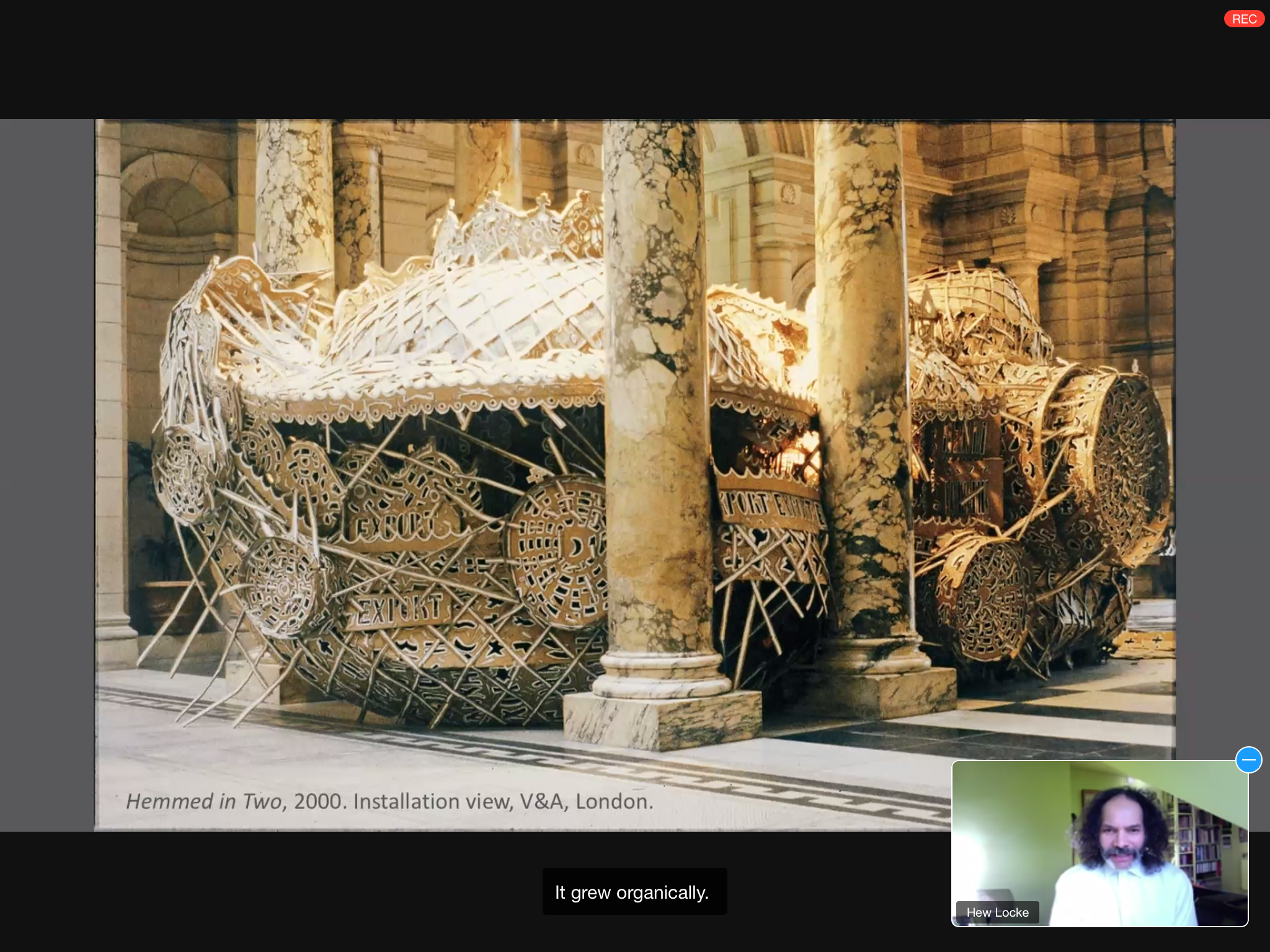
Yale Daily News
An elaborate cardboard ship once stood pressed against the pillars of the Victoria and Albert Museum in London. The installation challenged the boundaries of its space. It was covered in signs that read “EXPORT” and barcodes corresponding to museum objects with themes such as blackface and slavery. This was “Hemmed in Two,” a sculpture that was created by British artist Hew Locke and had once captured the attention of Martina Droth.
Twenty years later, Droth — now deputy director of research, exhibitions and publications and curator of sculpture at the Yale Center for British Art — invited Locke to a public conversation as part of the YCBA’s “at home: Artists in Conversation” series. Over an hour-long Zoom webinar last Friday, Droth and Locke discussed the key themes in Locke’s sculptures and photography.
“I wanted to show the trajectory of his work — the way in which his work has taken a theme but also changed over time,” Droth said.
Droth highlighted the relevance of Locke’s work to current conversations about race, authority and colonialism. She said his pieces “deconstruct” histories of state power.
Even though Locke is based in London, his works relate to contemporary American public discourse. This includes the recent controversy over removing historic monuments and statues across the country. Locke began photographing monuments in 2005, and his works help viewers understand the structures in terms of the people they memorialize to the present day.
“I felt that these statues were invisible. Nobody was paying attention to them,” Locke explained during the webinar. “I wanted to make them more visible and bring them into the conversation about ideas of who these people are.”
Locke is a British artist, but as a person of color, he sometimes felt as though his work was not accepted as British. In fact, the “EXPORT” signs on “Hemmed in Two” are a statement about his work being viewed as “exported from somewhere else.”
Locke described the experience of British artists of color in the late ’90s as “a position where we have to teach people where we were coming from.” He added that his goal is not to “batter people in the head” with his symbolism, but merely to express his sentiments to people.
“At the same time, I put something out, and if you don’t get it, you don’t get it,” Locke said. “I am not making a political or literal slogan — it’s artwork.”
In recent years, Locke has photographed monuments in both England and New York. Some of the monuments he photographed — including a statue of Edward Colston, a merchant with ties to the Atlantic slave trade — have been taken down amid rising concerns about the subjects’ histories and legacies of racism.
The YCBA created the “at home” series to engage their audience remotely. Artists in the series are chosen with the museum’s collections and upcoming showcases in mind. In a time of limited access to the museum and a lack of in-person events, the YCBA hopes these events will generate interest in their collection and keep people engaged for future collaborations.
According to Beth Miller, deputy director for advancement and external affairs, each webinar has been attended by around 150 to 200 people across multiple time zones. Unlike the YCBA’s previous livestreamed events, Zoom webinars allow remote attendees to ask questions. This makes the event “very participatory and connected.” Miller said that the YCBA plans to expand the Zoom webinars to symposia and workshop events.
The “at home” series is just one part of the YCBA’s digital programming, which began in late July. YCBA’s programming also includes a series of pre-recorded performances that premiere once a month. These performances range from musical concerts to literary readings.
YCBA’s public reopening will not impact the “at home” series. The next event, featuring Rebecca Salter in conversation with Scott Wilcox, will be held on Oct. 9. Attendees can pre-register for free in order to attend.
Serena Puang | serena.puang@yale.edu







